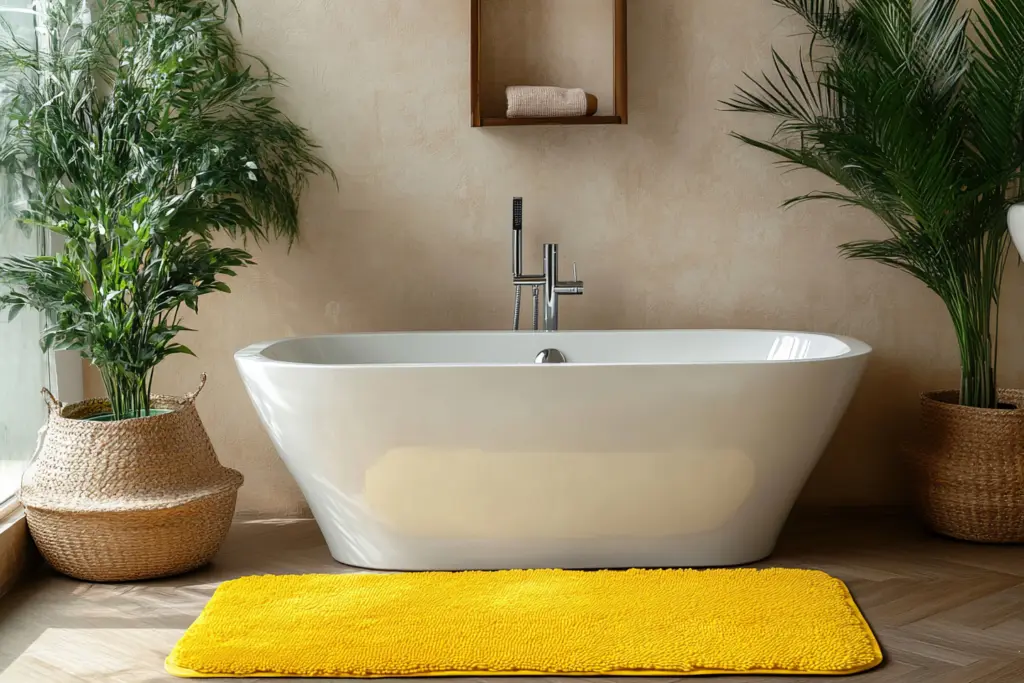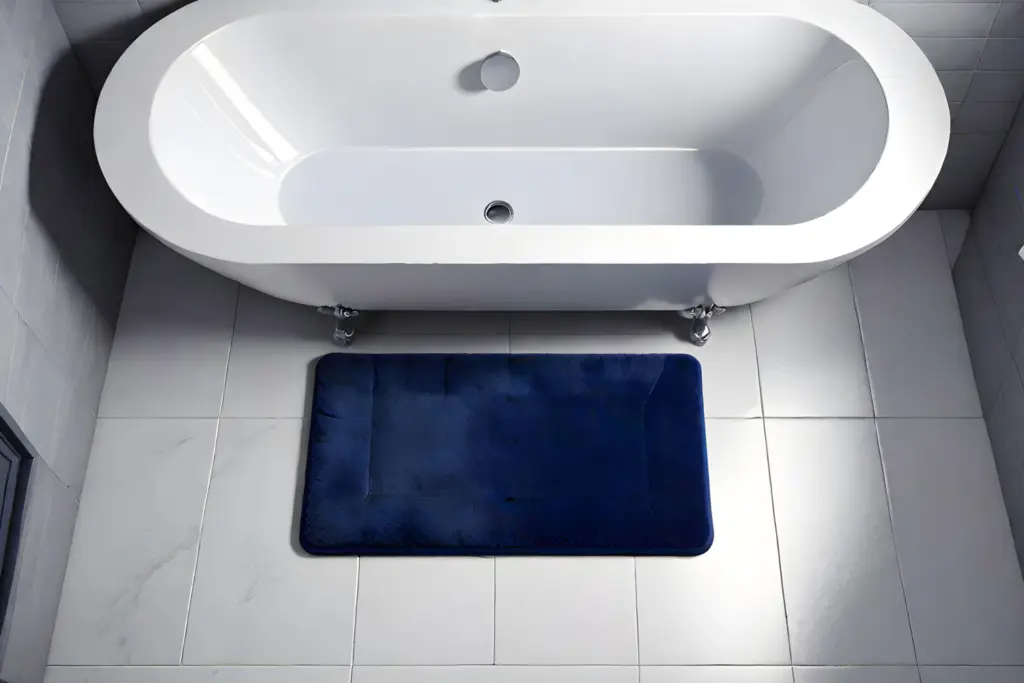
When was the last time you thought about replacing your bath mat? Replacing your bath mat is something you don’t often think about unless you are decorating your bathroom. It’s one of those household items you tend to overlook until it’s worn out or looking a little too grungy. But bath mats play an essential role in keeping your bathroom clean, dry, and safe, so it’s worth knowing when and why you should replace them.
Why Replacing Bath Mats is Important
Bath mats are more than just a soft place to step after a shower, although they are that too. Bath mats help to prevent slips, absorb excess water, and keep your bathroom floor dry. Over time, however, they can harbor bacteria, mould, and mildew, even if they look relatively clean. The bacteria naturally grows if your bath mat is always wet and not getting the chance to dry out properly. If left too long, your bath mat can become a health hazard rather than a safe and cozy spot to flex your toes.
Replace Every 1-2 Years
On average, you should consider replacing your bath mat every 1 to 2 years. This time frame varies depending on how often you use it, the material it’s made from, and how well you take care of it. For example, a bath mat in a frequently used bathroom where it is being used lots of times in a day will likely need to be replaced more often than a bath mat in a guest bathroom that’s rarely used.
Signs It’s Time to Replace Your Bath Mat
Here are a few key signs to watch out for if you are wondering how often should you replace your bath mats?:
- Visible Wear and Tear
If your bath mat is fraying, has holes, or is losing its shape, it’s time for a new one. Over time, the fibres can break down, making the mat less effective at absorbing water and providing a non-slip surface. - Smells After Washing
Even with regular washing, bath mats can start to smell. Moisture gets trapped in the fabric, and over time, mold and mildew can grow. If your bath mat has a smell that doesn’t go away after washing, it’s a clear sign it’s time for a replacement. - Stains and Discoloration
Stains can be tricky to remove, and sometimes they become permanent. If your bath mat is stained or has unsightly discoloration, replacing it can instantly freshen up the look of your bathroom without costing a fortune. - It’s Lost Its Grippy Backing
Many bath mats come with a rubber or non-slip backing. Over time, this breaks down or wears off, which can be a safety hazard. If your mat slides around, it defeats its purpose of preventing slips. When the grip is gone, it’s time to shop for a new one. - You’ve been using it for longer than 2 years
If you have been using your bath mat constantly for more than two years in a bathroom with average traffic it is time to treat yourself to a new one.
How to Extend the Life of Your Bath Mat
While you will eventually need to replace your bath mat, there are steps you can take to make it last longer. Here are a few how to tips to keep your bath mat in good shape so you shouldn’t have to replace your bath mats too often:
Wash it Regularly
Aim to wash your bath mat every 1 to 2 weeks, especially if it’s in a high-traffic bathroom. Use warm water and a mild detergent to help keep bacteria and mould at bay. If it’s safe for the material, you can add a little white vinegar to the wash for extra natural disinfecting power.
Hang your Mat To Dry After Every Use
After every shower, make sure to hang your mat so it can air dry completely. This helps prevent moisture from getting trapped that can lead to mould and mildew. Air drying your mat is also the best way to help prevent shrinking from drying with heat, peeling of the rubber on the back of your mat, and it reduces wear to the fabric.
Use a Dehumidifier or Bathroom Fan
Reducing bathroom humidity can significantly slow down bacteria and mould growth on your bath mat. It also helps your mat to dry out.
Rotate Your Mats
This is key if you want to extend the life of your bath mat. It’s also a great way to add seasonal décor to your bath mat, by rotating in seasonal colors or patterns. This gives each one time to dry out thoroughly after washing, reducing the temptation to throw down a slightly damp mat when you don’t have a spare. It also reduces wear from constant use. Plus, you’ll always have a fresh mat on hand when one is in the wash.
Choosing the Right Bath Mat Material For You
When it’s time to replace your bath mat, you might wonder what type of material is best. There are several options available, and each has its pros and cons. Here is a quick overview of some of the options you can consider, especially if your fancy a change in bathroom style.
Cotton Bath Mats
Pros: Soft, absorbent, and easy to wash, cotton bath mats feel great under foot. You can also get some nice thick bath mats for a truly luxurious feel.
Cons: Can take a while to dry out properly, an issue that may encourage mould growth in damp bathrooms. Thick mats are especially prone to this problem and noodle style bath mats in particular.
Microfiber
Pros: Quick-drying and highly absorbent, microfiber bath mats are a good option if you want something that resists mould and mildew. They’re also soft underfoot, but you don’t get the same luxury feel.
Cons: Can wear out faster than other materials.
Memory Foam
Pros: Known for their cushy feel, memory foam bath mats offer extra comfort for your feet.
Cons: May not be as absorbent as cotton or microfiber. They can be a good option for a more luxurious feel but may require frequent cleaning to prevent unwanted smells.
Bamboo or Wood
Pros: If you’re looking for something more eco-friendly, bamboo or wooden bath mats are a great option.
Cons: They don’t absorb water, which means they don’t get mouldy, but they do need regular cleaning to prevent soap scum build-up.
Final Thoughts
So, how often should you replace your bath mats? As a rule, every 1-2 years is ideal, but always keep an eye out for signs like wear and tear, unpleasant odors, or loss of grip in the meantime. A well-maintained bath mat not only keeps your bathroom looking fresh but also helps keep your family safe by preventing slips and keeping the floor dry.
Taking care of your bath mat with regular washing and proper drying can extend its life, but don’t hesitate to replace it when it starts showing signs of age. Your bathroom will feel fresher, and you’ll enjoy the comfort and safety of a brand-new mat underfoot.


